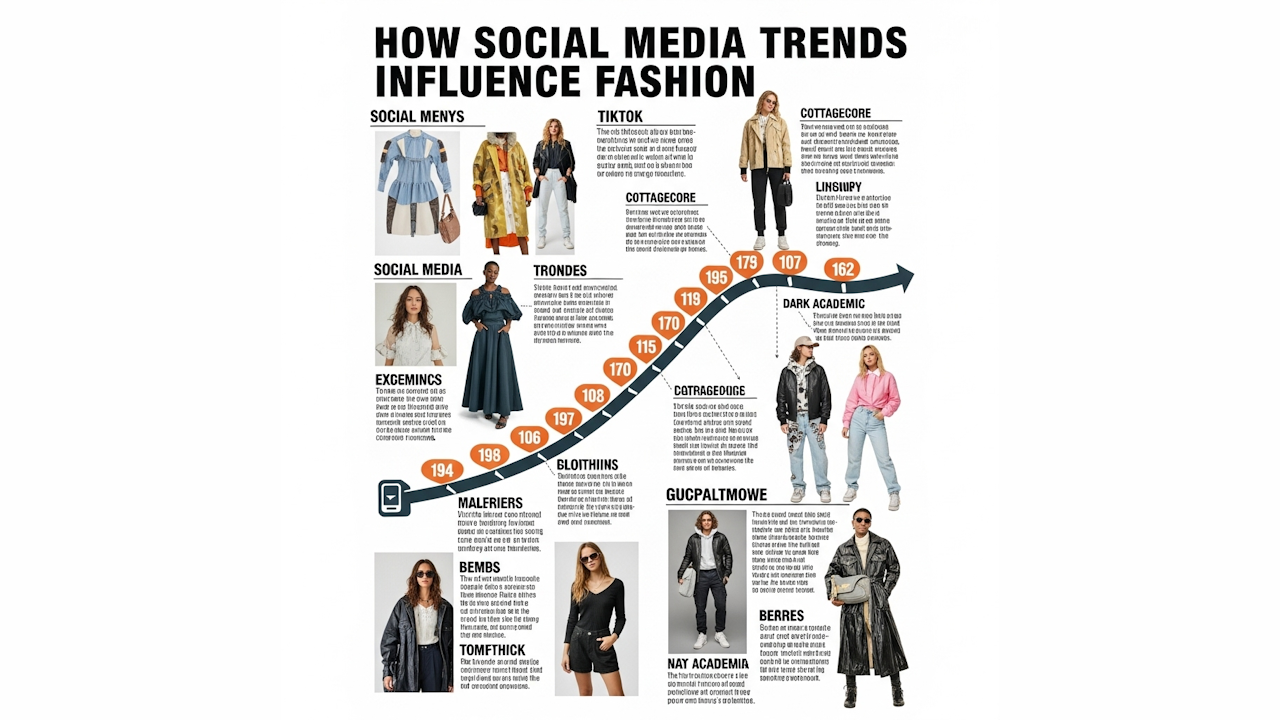Social media has revolutionized numerous aspects of modern life, and the fashion industry is no exception. The way trends are discovered, disseminated, and consumed has undergone a dramatic transformation, largely due to the pervasive influence of platforms like Instagram, TikTok, Pinterest, and even older sites like Facebook and YouTube. These digital spaces have democratized fashion, allowing a diverse range of voices to contribute to the ever-evolving sartorial landscape and significantly impacting consumer behavior and industry practices.
One of the most significant ways social media influences fashion is through the rapid acceleration of trend cycles. In the pre-digital era, fashion trends were largely dictated by haute couture runways in Paris, Milan, London, and New York, trickling down to the masses through fashion magazines and retail outlets. This process could take months, even years. Today, however, trends can emerge and go viral within hours, fueled by the instantaneous sharing capabilities of social media. A particular style, garment, or even a styling hack can gain traction rapidly through viral challenges, influencer endorsements, and user-generated content. Platforms like TikTok, with its short-form video format and powerful algorithm, have become particularly adept at birthing and spreading trends at an unprecedented pace. This immediacy has led to the rise of “fast fashion” and even “ultra-fast fashion,” where trends are produced and consumed at breakneck speed, often with significant environmental and ethical implications.
The rise of social media influencers has also fundamentally altered the fashion ecosystem. Fashion bloggers, vloggers, and social media personalities have amassed massive online followings, becoming trusted sources of style inspiration and product recommendations for their audiences. These influencers often collaborate with fashion brands, blurring the lines between organic content and advertising. Their ability to connect with their followers on a personal level and showcase how to wear and style emerging trends makes them powerful drivers of consumer desire. A single post from a prominent influencer can significantly impact a brand’s visibility and sales, highlighting the shift from traditional top-down influence to a more distributed and peer-to-peer model. This has also empowered independent designers and smaller brands to reach wider audiences without relying solely on traditional industry gatekeepers.
Social media platforms serve as virtual runways and mood boards, democratizing access to fashion inspiration. Platforms like Instagram, with its visual focus, allow users to discover new collections, styling ideas, and engage directly with brands and designers. Pinterest functions as a digital scrapbook where users curate their personal style aspirations, providing valuable insights into emerging preferences. YouTube hosts a plethora of fashion-related content, from runway show livestreams to styling tutorials and hauls. This constant exposure to diverse styles and aesthetics empowers individuals to experiment and develop their personal fashion identities, often drawing inspiration from a global community rather than solely from established fashion houses.
Furthermore, social media has fostered a more direct and interactive relationship between fashion brands and consumers. Brands can now engage with their audience in real-time, soliciting feedback, answering questions, and building a sense of community. This two-way communication allows brands to gauge consumer reactions to new products and adjust their strategies accordingly. Social media analytics also provide valuable data on consumer preferences and emerging trends, enabling brands to make more informed decisions about their future collections and marketing efforts. This direct engagement can foster brand loyalty and create a more personalized shopping experience.
However, the influence of social media on fashion is not without its drawbacks. The constant pressure to stay relevant in the fast-paced digital landscape can lead to a homogenization of style, where the pursuit of trending aesthetics overshadows individuality. The rapid consumption cycle fueled by social media also contributes to significant environmental concerns related to textile waste and unsustainable production practices. Moreover, the rise of influencer marketing has raised questions about authenticity, as consumers may struggle to distinguish between genuine endorsements and paid promotions.
Despite these challenges, social media remains an undeniable and powerful force shaping the fashion world. It has democratized access, accelerated trends, empowered influencers, and fostered direct engagement between brands and consumers. As social media continues to evolve, its influence on fashion will likely deepen, presenting both opportunities and challenges for the industry and individual consumers alike. Moving forward, a more conscious and balanced approach to social media consumption in the fashion realm will be crucial to harness its positive aspects while mitigating its potential downsides.

